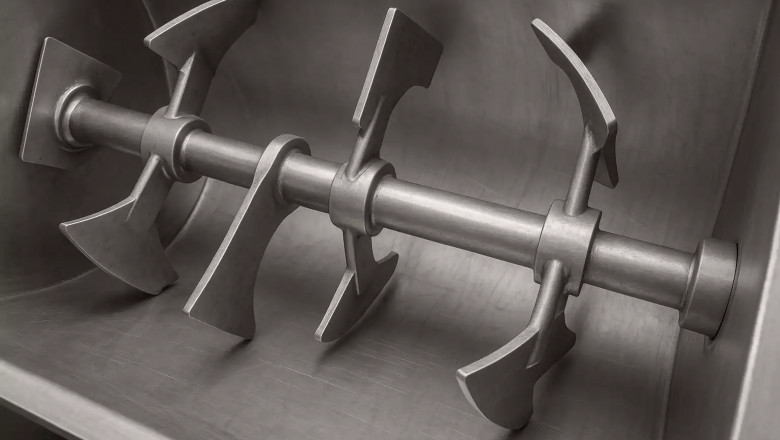views
How to Clean the Ploughshare Mixer After Production - VORTEX Mixing Technology
The ploughshare mixer, also known as a plow knife mixer, is widely used in industries such as chemical, pharmaceutical, food, and construction materials. It is especially effective for the dispersion treatment of various fibers and for mixing solid powders, offering strong and efficient performance. However, like all industrial equipment, proper maintenance—including thorough cleaning after production—is essential to ensure consistent operation, extend service life, and maintain the quality of the products being processed.
After each production run, residual materials inevitably remain inside the mixer. Due to the presence of sharp internal blades and the complex internal structure, cleaning a ploughshare mixer is not as straightforward as cleaning simpler equipment. Special attention must be paid to safety and cleaning techniques. Mishong Machinery provides the following comprehensive guide to help operators and maintenance teams perform efficient and safe cleaning of the ploughshare mixer.
Cleaning after production is a critical maintenance step for several reasons:
Given these factors, developing a regular, thorough cleaning routine is non-negotiable.
After production, start by carefully removing all visible residues inside the mixing chamber. Use appropriate non-metallic scrapers and brushes to avoid damaging the internal surfaces. Vacuum systems can also be helpful for removing fine powders.
Operators should take extreme care during manual residue removal because the blades inside the mixer are sharp and could cause injury if handled carelessly.
During the cleaning process, it is crucial to inspect several key components to ensure the mixer remains in good working condition:
Proper adjustment of the oil spray nozzles is necessary to prevent unwanted oil accumulation inside the mixer. Ideally, the nozzles should be adjusted so that oil does not spray directly onto the sidewall panels or onto the blades at both ends of the mixer. Oil sprayed on these surfaces can trap particles, leading to stubborn residues that are difficult to clean.
When adjusting the nozzles, aim for a precise and controlled spray that adequately lubricates the moving parts without causing excess oil mist in unwanted areas.
The temperature of the heating oil must be controlled carefully. If the oil temperature is too high, it can cause the oil to mix with product residues, forming sticky clumps inside the mixer. These clumps are difficult to remove and can severely impact both cleaning efficiency and subsequent production quality.
Maintaining the oil at an optimal temperature ensures proper lubrication without unnecessary contamination or buildup inside the mixer.
Cleaning the ploughshare mixer safely is paramount. Operators should:
Special attention should also be given to the sequence of cleaning operations. Clean from top to bottom and from inside out to prevent cleaned areas from becoming contaminated again during the process.
The frequency of cleaning depends on the production schedule and the materials being processed. In general:
Following a disciplined cleaning schedule not only protects the integrity of your products but also optimizes the operational reliability of your ploughshare mixer.
Cleaning the ploughshare mixer after production is a vital step that should never be overlooked. Although the internal sharp blades and intricate construction add complexity to the task, following the correct procedures can ensure both operator safety and equipment longevity. Careful residue removal, regular inspection of key components, proper adjustment of oil spray nozzles, and meticulous control of oil temperature are essential aspects of the cleaning process.
By emphasizing safe cleaning practices and maintaining a regular cleaning schedule, you can prevent contamination, enhance production efficiency, and prolong the life of the ploughshare mixer. Mishong Machinery recommends always treating cleaning and maintenance with the same importance as production itself, ensuring your equipment remains reliable, safe, and ready for the next batch.
Hot Search:Mixers
Ribbon Blender Mixer
Twin Shaft Paddle Mixer
Plough Shear Mixer
Conical Screw Mixer(Nauta Mixer)
Copyright © 2017- 2025 VORTEX Mixing Technology All Rights Reserved SiteMap
















Comments
0 comment